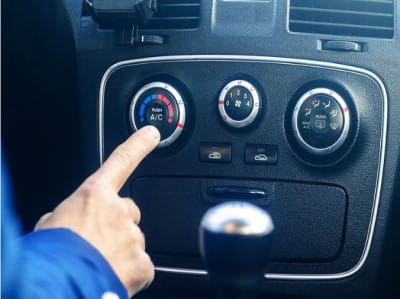
5 Tips For Driving In the Snow
Driving in the snow can be a significant source of stress for even the most seasoned drivers—let alone those who are setting out on slippery winter roads for the very first time. Unfortunately, not everyone can stay home when it snows, so having a basic understanding of how to handle a vehicle in inclement winter weather is not only advisable, it can be the difference between arriving safely at your destination and ending up with a damaged car (or worse).
1. Don’t slam on the brakes
When you feel your car start to skid, it’s easy to give into instinct and jam the brake pedal down as hard as you can. Unfortunately, this move is likely to do more harm than good on slippery roads. You’re more than likely going to activate your car’s anti-lock braking system (ABS), which stops the wheels from locking up so you can steer to safety, and will likely create a sensation like your pedal is shuddering or pushing back against you.
Instead of making sudden movements, stay calm, cool, and collected. Apply pressure to both the brake and the gas gently, so that any changes in your car’s motion are gradual. This will help your car’s tires avoid losing traction on the slippery road. Even if you begin skidding, you can likely still recover by easing off the gas and keeping your wheels pointed in the direction you want to be going.
2. Okay so you slammed on the brakes—don’t let up
ABS can be extremely helpful in an emergency. If your attempts at gentle driving have failed and you find yourself skidding towards imminent impact, keep the brake pedal pushed down and continue steering as best you can. Your car’s ABS are designed to automatically adjust the intensity of pressure applied to the wheels to account for your steering, helping bring you to a stop while hopefully allowing you to avoid obstacles.
3. Keep an eye on your surroundings
It can be easy to get tunnel vision when you’re driving in the snow, and focus only on the road directly ahead of you. But paying attention to your broader surroundings is crucial to your safety and that of others, particularly when it comes to rough weather conditions. The dicier things get on the road, the more you should be looking ahead to what’s coming next, so you can be prepared for the obstacles coming your way. If you’re driving on a two-way road, you can also take a look at the cars coming from the direction you’re headed in. If they have their windshield wipers or hazard lights on, it’s likely a sign that the snow is falling faster and thicker up ahead.
4. Consider waiting it out
While some storms drag on for a while, most bursts of intense snow are short-lived, and areas that routinely see winter weather have infrastructure in place to salt and plow the roads and generally keep traffic moving safely. If you feel unsafe while you’re driving, you shouldn’t be afraid to play it safe and pilot your car off the road at a rest stop or on the shoulder, to wait out a particularly intense burst of snow.
If you’ve checked out the forecast and know the weather is unlikely to relent for a while, however, don’t pull off the road to wait unless you have somewhere (like a rest stop, or a friend’s house) to go.
5. Winterize your car
If you live in an area where it snows, this should already be on your to-do list. AAA has great resources to help you make sure your car is ready for the cold—and, with a AAA membership, a team of certified car care experts available 24/7 to help you should you run into trouble. Especially important on this list are your tires: having snow tires and chains will make all the difference when you’re implementing the other tips above.







